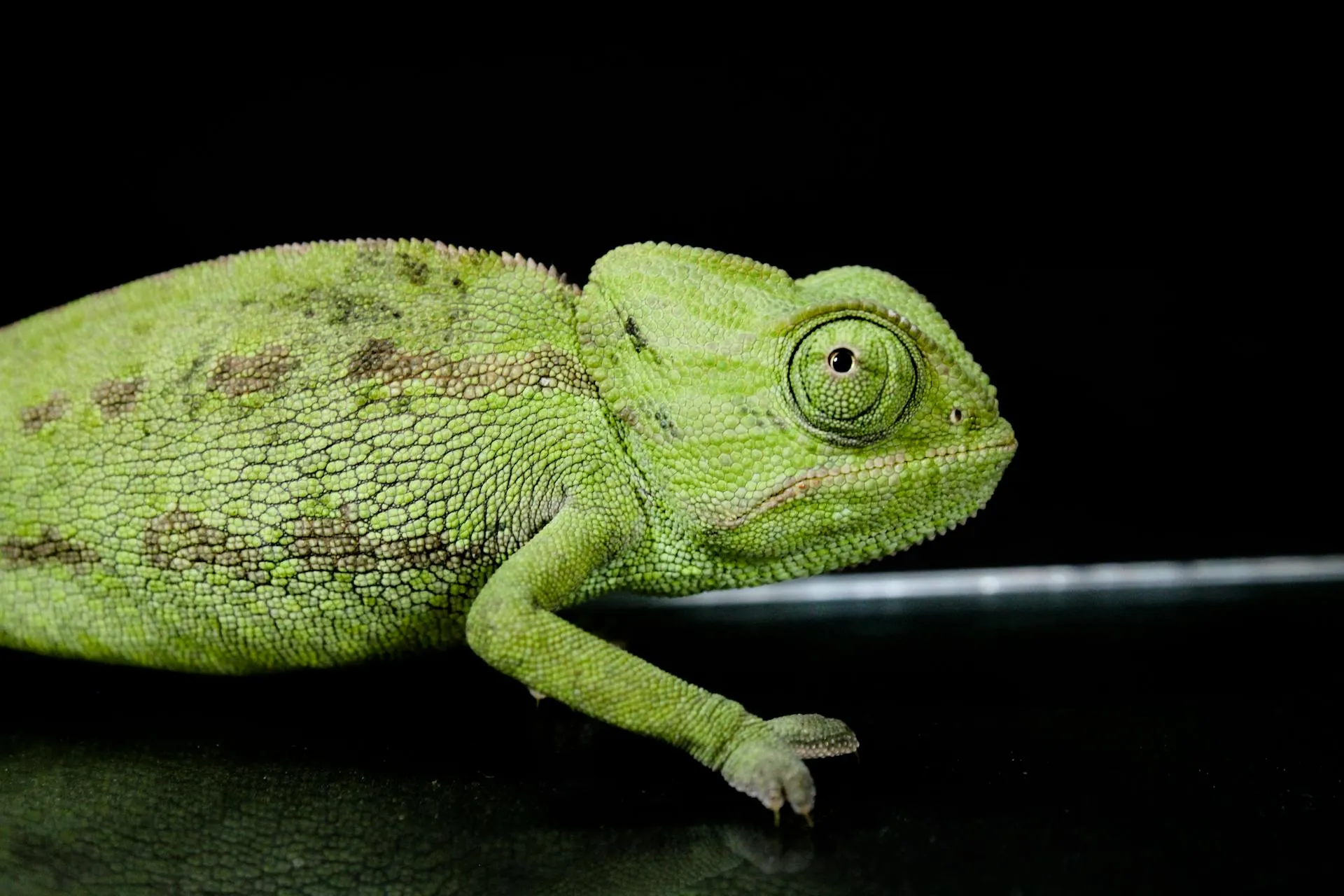Bringing a new reptile into your home can be an exciting experience, but it also requires careful attention to their needs as they adjust to their new habitat. Whether you’re welcoming a snake, lizard, turtle, or another exotic pet, creating the right environment is crucial for their health and well-being. At Galena Animal Medical Clinic, your Galena, MD, animal hospital, we understand how important it is to ensure that your reptile feels comfortable, safe, and secure in their new home.
In this blog, we’ll provide helpful tips and expert advice on how to assist your reptile in making a smooth transition to their new habitat. Proper care, patience, and an understanding of their unique needs will make all the difference in ensuring your reptile thrives in its new environment.
The Importance of a Proper Habitat for Your Reptile
A reptile’s habitat is essential to its overall health. Unlike mammals, reptiles are cold-blooded, which means their body temperature depends on their environment. Therefore, the setup of their enclosure plays a significant role in regulating their health, stress levels, and ability to digest food. Proper habitat adjustments can help your reptile feel at home and reduce the stress that comes with relocation.
Setting up a new habitat requires careful planning, as reptiles rely on their environment for temperature regulation, humidity, food, and security. Here’s how you can help ease the transition for your reptile.
Click here to read our previous blog on reptile care.
Tips for Setting Up a New Reptile Habitat
1. Create the Right Environment
Every type of reptile has specific habitat requirements. Before introducing your reptile to its new home, make sure the enclosure meets these needs. Factors such as temperature, humidity, light, and space are all important for your reptile’s comfort.
Temperature Control:
- Heating: Many reptiles need a heat source to regulate their body temperature. Depending on the species, you may need heat lamps, heating pads, or ceramic heat emitters to provide adequate warmth. A thermometer inside the habitat will help you monitor the temperature.
- Basking Areas: Many reptiles require a basking area where they can heat up their body. Create a designated warm spot in their habitat with a higher temperature than the rest of the enclosure.
Humidity Control:
- Reptiles such as amphibians, certain lizards, and tropical species may need higher humidity levels. You can achieve this by using a humidifier, misting the enclosure with water, or adding plants and water features. Be sure to check the recommended humidity levels for your pet’s specific needs.
Lighting:
- UVB light is essential for reptiles like turtles and lizards that need exposure to UV radiation for vitamin D3 production. Use UVB bulbs in their habitat to ensure they can absorb calcium and maintain bone health.
Reptiles Magazine has an article on reptile lighting, which you can find here.
Proper Substrate:
- The substrate (or bedding) should match your reptile’s needs. Some reptiles prefer a dry substrate, while others need more moisture-retentive materials. Common substrates include sand, coconut fiber, paper towels, or soil. Ensure it’s safe for your pet and appropriate for their species.
2. Allow Time for Adjustment
When you first bring your reptile home, it’s important to give them time to acclimate to their new habitat. Don’t try to handle or interact with them too much in the first few days. Instead, let them settle in and explore their new space at their own pace.
Gradual Introduction:
- Start by introducing your reptile to its new home by placing them in the enclosure and allowing them to explore their surroundings. Don’t force interaction; they’ll adjust at their own pace.
- Be patient and avoid over-stimulating your reptile during this transition period. It’s normal for them to hide or stay in one spot as they get used to their new environment.
3. Establish a Feeding Routine
Reptiles often experience stress after a move, which can affect their appetite. However, feeding them regularly and on a schedule can help them adjust. Be patient if they don’t eat right away, as it can take a few days or even weeks for some reptiles to feel comfortable enough to eat.
Offer Appropriate Food:
- Provide your reptile with food that’s suitable for their species. For carnivorous reptiles, this might include insects or small rodents, while herbivorous reptiles may prefer leafy greens and vegetables. Ensure you are offering fresh, clean food at the right temperatures.
Monitor Eating Habits:
- If your reptile isn’t eating after a few days, don’t worry too much, as it’s common for them to lose their appetite due to the stress of moving. However, if the lack of appetite persists for more than a week, it’s a good idea to consult with your veterinarian.
4. Offer Hiding Spots for Security
Reptiles are often shy creatures that require hiding spots in their environment. A lack of a hiding place can cause stress, so be sure to provide secure areas where your reptile can retreat to when they feel threatened.
Ideas for Hiding Places:
- Caves or Shelters: Use logs, rocks, or ceramic hideouts to create hiding spaces. Make sure the hiding spots are large enough for your reptile to enter and exit comfortably.
- Plants: Live or artificial plants can also serve as excellent hiding spots, in addition to adding natural beauty to the habitat.
5. Keep the Environment Clean
Maintaining cleanliness in your reptile’s habitat is vital to preventing diseases and ensuring your pet remains healthy. Regularly remove waste, uneaten food, and soiled bedding to keep the environment hygienic.
Clean the Enclosure:
- Clean the entire habitat at least once a week, removing all bedding, disinfecting the surfaces, and replacing with fresh materials.
- Regularly clean water dishes and food containers to prevent bacterial growth and ensure your reptile has access to fresh food and water.
6. Monitor for Stress Signs
While your reptile is adjusting to its new home, keep an eye on signs of stress. Stress can manifest in various ways, such as changes in eating habits, lethargy, hiding excessively, or abnormal behaviors.
Common Signs of Stress:
- Reduced appetite or refusal to eat
- Excessive hiding or inactivity
- Aggressive or defensive behaviors
- Regurgitation or vomiting (especially for certain reptile species)
If you notice signs of stress that persist, it may indicate that there’s something wrong with the habitat or your pet’s overall health. In this case, consult your veterinarian for guidance.
The Royal Society For The Prevention of Cruelty For Animals has an article on caring for reptiles and exotics here.
Frequently Asked Questions
1. How long will it take for my reptile to adjust to their new habitat?
Adjustment time varies depending on the species and individual animal. Generally, reptiles may take anywhere from a few days to several weeks to fully acclimate to their new environment.
2. Should I handle my reptile right after I bring them home?
It’s best to allow your reptile time to settle into their new habitat before handling them. After a few days, you can begin to interact with your reptile, but always be gentle and patient.
3. What should I do if my reptile stops eating after the move?
Some reptiles may stop eating temporarily after a move due to stress. If your reptile hasn’t eaten in over a week, consult with your veterinarian to ensure there are no underlying health issues.
4. How often should I clean my reptile’s habitat?
The frequency of cleaning depends on the type of reptile and the size of the enclosure. Generally, spot cleaning should be done every day, and a full clean should take place once a week.
Schedule An Appointment At Our Galena, MD Pet Clinic
Helping your reptile adjust to a new habitat takes time and patience, but with the right setup and care, your pet will settle in and feel at home in no time. At Galena Animal Medical Clinic, your Galena, MD, animal hospital, we’re here to support you and your reptile every step of the way. If you have any questions about your reptile’s care or if you’re unsure about your pet’s habitat needs, don’t hesitate to reach out to us for advice.
Click here to visit our Service page and find out more about our clinic and the animals we treat. You can also go here to learn more about our Critical Care services, or go here to learn more about our Exotic Pet care offerings.
This blog is meant to be informational only. Always consult with your veterinarian for the right medical advice, diagnosis, or treatment plan for your pet and follow their advice.







!Social Media Icons